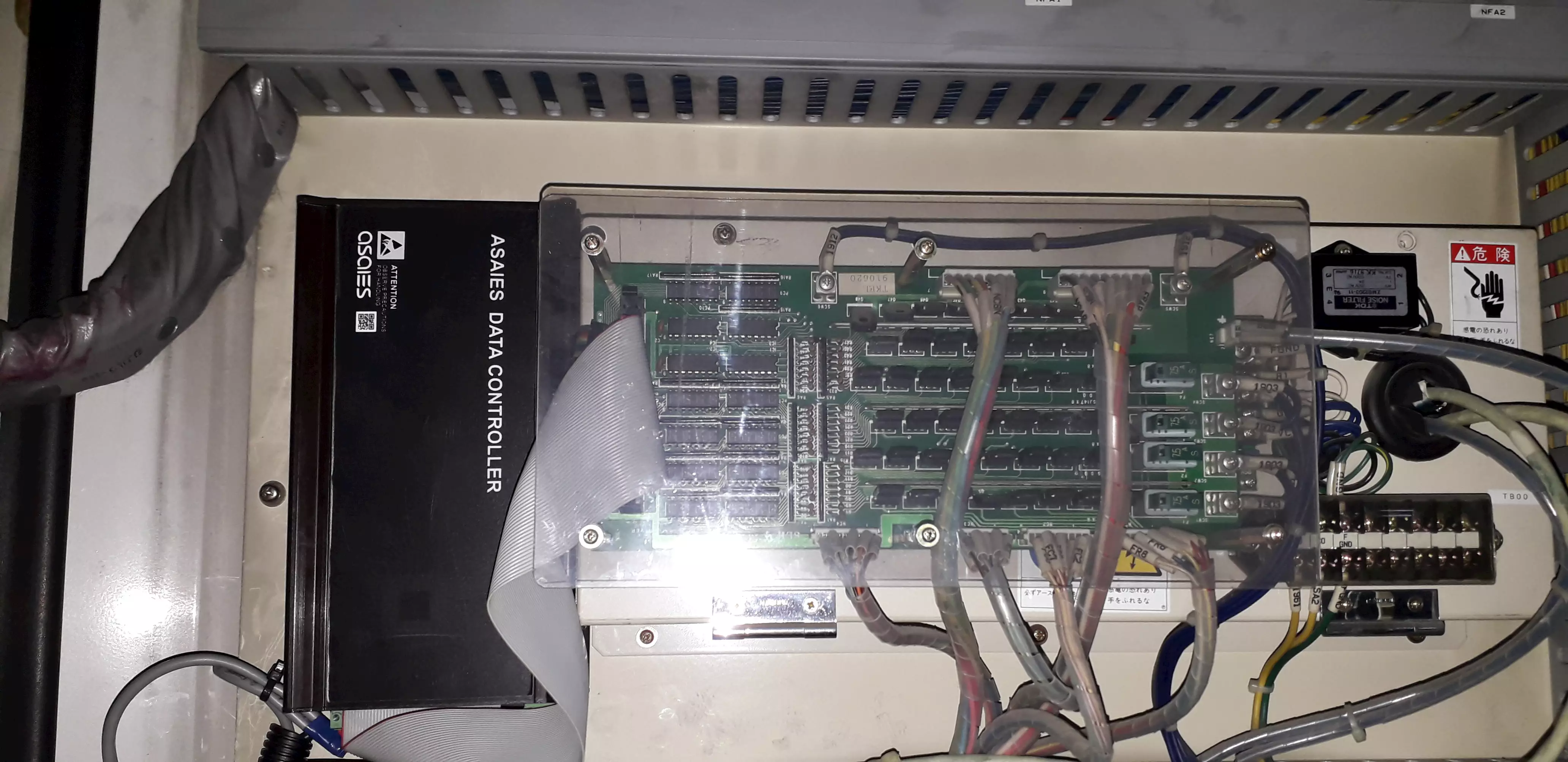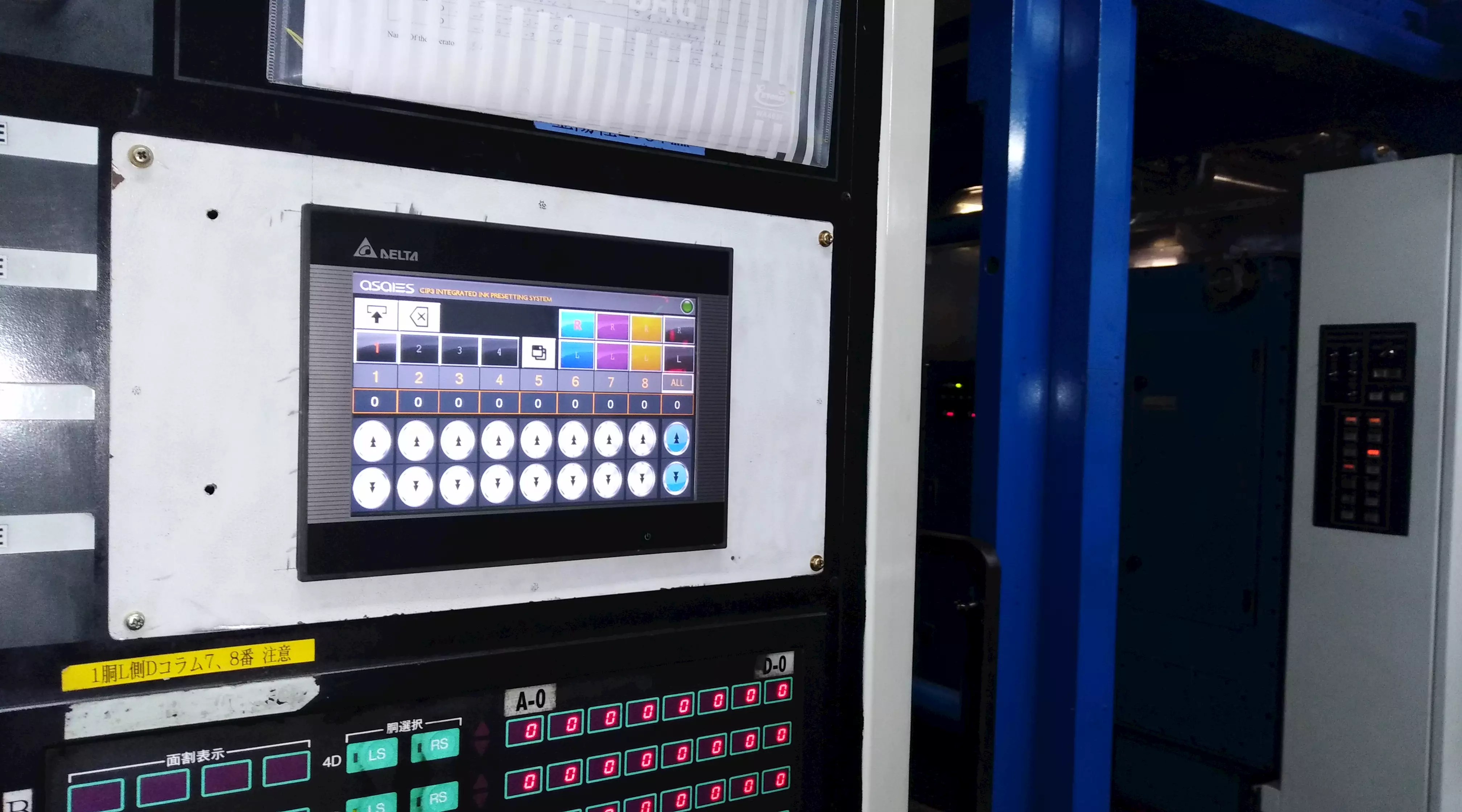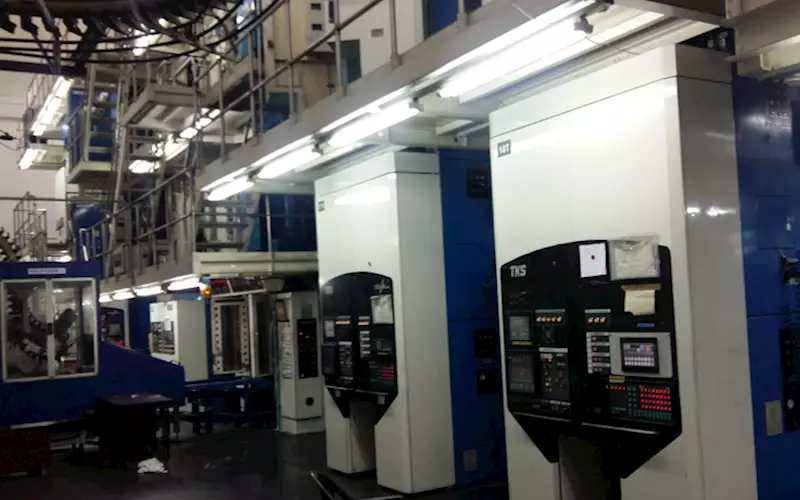Malayala Manorama optimises ink setting
The AsaiesCIP3 ink presetting system has been successful at Malayala Manorama on a double-width TKS web offset press.
03 Apr 2019 | By Sriraam Selvam
VN Rajesh Kumar of Asaies Automation said, “Some of the ink controller cards were faulty and it was causing problem for proper ink setting. There were no spares available since it was an older model. As a result, a total replacement of the system was suggested by the manufacturer.”
The Asaies team suggested it can upgrade the system with a customised solution. This meant no disturbance to the ink key motors and working components. There were discussions with the Malayala Manorama team. That’s how the requirement for an automatic ink pre-setting and a CIP3 license was agreed upon.
Rajesh Kumar added, “We took up the challenge and developed a software that runs on an embedded server which can take the 1-bit TIFF files from pre-press and process it instantly to generate ink data.”
The company also developed a hardware controller that can connect to the existing driver boards for motor controlling. In addition, a HMI-based operator console have been developed which could get data from the CIP server and send controls for ink key pre-setting.”
Since all the ink keys were not functioning uniformly there was an urgent need to provide a provision for profile setting in the system. Kumar shared: “We have done customisation for operator console to match with their existing console.”
The Asaies team has provided a plug-in feature for the system so even if the operator wants to revert to the old method, the operator can disconnect the controller and work like earlier.

Now, after a successful run on the first tower, Asaies has upgraded the second tower.
Asaies is a new generation R&D company based in Kochi. The company has been engaged in developing cost-effective and advanced automation solutions for the print and packaging industry. At the helm is VN Rajesh Kumar, CEO and technical director with years of R&D experience in image processing, machine vision, embedded and information systems coupled with strong industry experience in offset print and packaging.
Rajesh Kumar said, “The Asaies focus is to improve print quality and efficiency while reducing operational cost for printers by means of saving paper, ink, labour and time.”
The key products include Acercon (automatic register control and cut-off control system), Inksmart (CIP3-based automatic ink presetting system), electronic web guide, electronic system for butler splicer, machine data capturing and monitoring solutions, etc.
Kumar stated, “We make customised register control, cut-off control and web guide control system for web offset and flexo presses. Unlike conventional register control systems for flexo presses, which uses colour sensors on every unit, we use camera-based solution which is easy to manage. We have successfully installed our systems flexo presses like Gidueand Allied Gear. This includes motorisation on a Giduepress for installing our register control systems.”
Kumar concluded, “We have made our systems compatible with most heatset, coldset, flexo presses from India and overseas.”
Currently Asaies has installations in machines like Manugraph, Orient, NBG, Komori, Harris, TKS, Gidue, Allied-Gear, etc.
A conversation with Rajesh Kumar

How does Asaies look at automation?
We see that every machine has some kind of unique features. Therefore, a generic and fit-for-all solution can’t really get you the best result always.
How so?
Many places we see that automation is in place but without getting the desired outcome or result because of obsoleted technology/old components. Printers tend to be comfortable as long as the system is working normally without realising the benefit of a potential upgradation with new generation technologies which can improve the numbers significantly for them.
Can Asaies do auditing of such systems?
Yes, we can. Also, we suggest improvements to get the best result out of an expensive and rugged machine.
Many printers having old and expensive machineries but they are not able to extract 100% throughput and efficiency due to manual operations or faulty electronic/automation systems. What can you offer?
We can replace the full electronic system of such machines. Since a manufacturer upgradation becomes economically unviable for most customers. At the same time, they try to cope with that compromising quality and productivity which affects their profitability. Even if a tiny part of the entire solution is faulty, the customer tends to replace the total system in the absence of relevant spares and outdated technology. This leads to a huge financial burden. Many printers depend of skilled labours for quality output and such dependency and availability of skilled labours is also a major concern.
So you try to use the existing and functional components to its maximum ability and try to develop and replace the required components thereby making it economically viable. Is that correct?
Yes. We gather the machine specific data for necessary configuration and customisation to optimise the solution so that the customer gets the best possible result out of their machine. When we do reverse engineering and design the customised solutions, we ensure that our newly made boards and connectors are easy to install/integrate with existing system boards by plugging-in.
Lots of flexibility?
Customers appreciate the flexibility in our solutions and our operator-friendly consoles for efficient operations. We get lots of feedback from customers in terms of required features based on their years of experience and difficulties. This helps us to make the system simpler and easy to operate with respect to OEM systems. So we try to incorporate such features to the upgraded system making it more operator-friendly and efficient than conventional systems.

And this is true for India?
We are working for customers not only from India but from the Americas, Europe and the Middle East. Apart from the cost, it’s also convenient for them as our solutions can be easily installed by their technical team with the help of our technical documentation and online support. We have an order from Greece for a customised solution for ink controlling. We have to make the system compatible with their machine console keyboard and LED display, etc. We are shipping the system even as we speak.
What about automation opportunities with new machines?
New machines are loaded with OEM pre-installed automation solutions. But there are customers who seek cost-effective alternatives and we support such customers. We are examining tie-ups with machine manufacturers so that the cost for ownership and maintenance will be lower for the customers.











 See All
See All